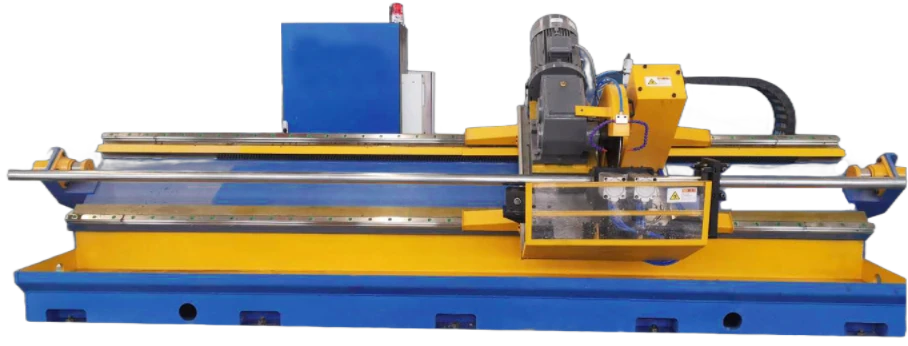Wire Straightening and Cutting Machine for Precision Metal Processing Applications
The Evolution and Importance of Wire Straight Machines
Wire processing is an integral part of numerous industries, from automotive to construction, and at the heart of this process lies the crucial equipment known as wire straight machines. These machines have evolved significantly over the years, transforming how wire is manufactured and prepared for various applications. This article aims to delve into the importance, functionality, and advancements of wire straight machines.
Wire straight machines are designed to ensure that wire is appropriately straightened and cut to precise lengths, creating uniformity for subsequent manufacturing processes. The primary purpose of these machines is to reduce the coiling and bending of wire, which can lead to inefficiencies and increased waste in production. By producing straight wire, manufacturers can achieve higher precision in constructions, such as reinforced concrete structures or automotive components, where exact specifications are critical.
The basic functionality of wire straight machines involves several key components. Typically, these machines employ rollers that guide the wire through the straightening process. As the wire moves through these rollers, they exert pressure that counteracts the wire's bends and coils, leading to a straightened product. Once straightened, the wire can be cut to the desired length, ready for further processing. The accuracy of this operation is vital; even a minor deviation can lead to significant issues downstream, affecting the quality and integrity of the final products.
In the past, the process of straightening wire was labor-intensive and often relied heavily on manual labor. Workers would use various tools to bend the wire back into shape, a time-consuming and often imprecise process. However, with the advent of wire straight machines, the industry has witnessed a dramatic increase in efficiency and precision. Modern machines are equipped with advanced technology, including digital controls and sensors, that ensure high levels of accuracy and consistency.
wire straight machine

The integration of automation into wire straight machines has further revolutionized the industry. Many contemporary machines are capable of operating autonomously, adjusting their functions in real time based on the input they receive. This not only minimizes human error but also increases productivity by reducing the time taken for setup and operation. As a result, manufacturers can process larger volumes of wire in shorter time frames, significantly enhancing their overall productivity and profitability.
Furthermore, advancements in material science have led to the development of machines that can handle a wider variety of wire materials, including steel, aluminum, and copper, among others. This versatility is essential for manufacturers who cater to multiple markets, allowing them to switch between materials seamlessly without needing entirely new equipment. Such adaptability positions businesses to be more competitive in a fast-paced market.
Sustainability is another critical aspect where wire straight machines are making a significant impact. With the increasing emphasis on eco-friendly manufacturing, these machines help minimize waste by ensuring that any defective wire can be straightened and reused, thereby reducing material wastage. Furthermore, by improving the efficiency of production, manufacturers can lower their energy consumption, contributing to a more sustainable operational model.
As industries continue to evolve, so too will the technology surrounding wire straight machines. Innovations such as AI-driven predictive maintenance and IoT integration could further enhance the functionality and reliability of these machines, helping manufacturers anticipate issues before they occur and reducing downtime.
In conclusion, wire straight machines play a pivotal role in the wire processing industry, providing invaluable efficiency, precision, and adaptability. As technology advances, these machines are expected to become even more sophisticated, continuing to enhance manufacturing processes across various sectors. Investing in high-quality wire straight machines not only improves production outcomes but also positions businesses for future success in an increasingly competitive market. The journey of wire straight machines from manual operations to today's automated systems reflects the broader trends of industrial innovation, showcasing their critical importance in modern manufacturing.
-
High Frequency Straight Seam Welded Pipe Production Line-BzZhou Xinghua Machinery Equipment Manufacturing Co., LTD.|line pipe steel&welded gas pipeNewsJul.30,2025
-
High Frequency Straight Seam Welded Pipe Production Line-BzZhou Xinghua Machinery Equipment Manufacturing Co., LTD.|High Precision&Automated SolutionsNewsJul.30,2025
-
High Frequency Straight Seam Welded Pipe Production Line - BzZhou Xinghua Machinery Equipment Manufacturing Co., Ltd.NewsJul.30,2025
-
High Frequency Straight Seam Welded Pipe Production Line-BzZhou Xinghua Machinery Equipment Manufacturing Co., LTD.|Precision Welding, High EfficiencyNewsJul.30,2025
-
High Frequency Straight Seam Welded Pipe Production Line|BzZhou Xinghua|Precision Welding&EfficiencyNewsJul.30,2025
-
High Frequency Straight Seam Welded Pipe Production Line - BzZhou Xinghua|Precision Engineering&EfficiencyNewsJul.30,2025


